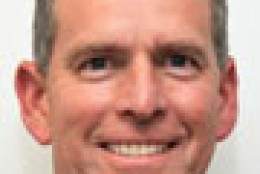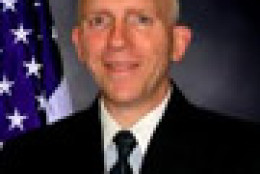Defense
-
Open architecture, where the Navy isn't locked into a particular vendor forever on a particular system, gets a huge boost from Chief of Naval Operations Adm. Jonathan Greenert. The Navy has a unique chance to reshape its fleet in the coming years. Bryan Clark, senior fellow of strategic studies at the Center for Strategic and Budgetary Assessments and former Special Assistant to the Chief of Naval Operations and Director of the CNO's Commander's Action Group, says the driving principle behind that reshaping should be the concept of "offensive sea control." He tells In Depth with Francis Rose about what that concept looks like.
November 19, 2014 -
The Defense Department's Better Buying Power principles are saving the Navy hundreds of millions of dollars. In one instance, the Better Buying Power approach allowed the Navy to acquire three new guided-missile destroyers because it saved a total of $300 million on the entire purchase. Nick Guertin, director of Transformation in the Office of the Deputy Assistant Secretary of the Navy for Research, Development, Test and Evaluation, tells In Depth with Francis Rose about the future of the Navy's acquisition policy and how the BBP strategy will play a role.
November 19, 2014 -
Adm. Jonathan Greenert, the chief of naval operations, said his service needs to pivot away from large, proprietary shipbuilding programs, citing the need for more flexible, adaptable platforms.
November 19, 2014 -
Janet Hill, principal at Hill Family Advisors, sits down with the Women of Washington radio show to discuss the importance of diversity in American corporations and her famous Wellesley classmate - Hillary Clinton.
November 19, 2014 -
The Navy secretary has spent more than a full year of his five-year tenure on overseas travel, racking up more than 930,000 miles on trips that cost taxpayers more than $4.7 million.
November 18, 2014 -
U.S. Cyber Command is reviewing the results of its biggest exercise of the year. CYBERFLAG is designed to test out the military forces' ability to keep fighting when an adversary is attacking their networks, and to link up cyber forces with the more traditional air, sea, land and space domains. Rear Adm. Kevin Lunday is Cyber Command's director for exercises and training. On In Depth with Francis Rose, he talked about the exercise -- and the three types of teams involved in it -- with Federal News Radio DoD Reporter Jared Serbu.
November 17, 2014 -
The pace of new Ebola infections appears to have leveled off, but its too early declare victory. A lot of work is going on behind the scenes, on the research front. Army scientists are working on a vaccine for Ebola. With troops being deployed to West Africa to help control and treat the outbreak, Army scientists are taking the most advanced vaccines forward as quickly as possible. Dr. John Dye is the viral immunology branch chief at the U.S. Army Medical Research Institute of Infectious Diseases. He tells Tom Temin on the Federal Drive that for the Army, research into infectious diseases has a long history.
November 17, 2014 -
Jeffrey Cathey and Lewis Runnion with Bank of America will discuss how the company is helping veterans find jobs in the private sector after they complete their military service. November 14, 2014
November 14, 2014 -
The Army Corps of Engineers' strategy for building more resilient civil works infrastructure involves planning for more unpredictable weather events, and treating watersheds as integrated systems instead of a collection of standalone projects.
November 13, 2014 -
Law enforcement set up a sting operation to arrest a former sailor who was impersonating an active-duty Navy SEAL.
November 13, 2014 -
Mike Krieger, the former Army deputy CIO/G6, retired after 35 years in government. He says the move to email-as-a-service in the cloud provided the Army the roadmap to change how it looks at shared services.
November 13, 2014 -
Former Army CIO Susan Lawrence discusses the challenges her agency faces in modernizing its network systems and the future of women in the service.
November 12, 2014 -
Prodded by an earlier pilot project with the Joint Staff, the Army is moving aggressively to replace thousands of desktop computers at the Pentagon with zero client hardware. The project should be completed by the end of 2015.
November 12, 2014 -
It may seem like a leap to go from Army sniper to a career helping federal agencies deliver great online customer service and software development practices. But that's the story of Randy Tharp. A wounded warrior of two tours of duty in Iraq, he's also had two tours of duty as a federal civilian employee before heading to the Five-Nine Group.
November 11, 2014 -
It may seem like a leap to go from Army sniper to a career helping federal agencies deliver great online customer service and software development practices. But that's the story of Randy Tharp. He's a wounded warrior of two tours of duty in Iraq, and he's also had two tours of duty as a federal civilian employee before heading to the Five 9 Group. Tom Temin spoke to Tharp on the Federal Drive.
November 11, 2014








